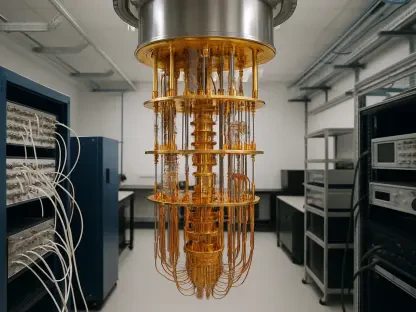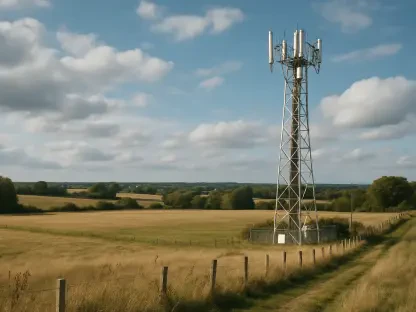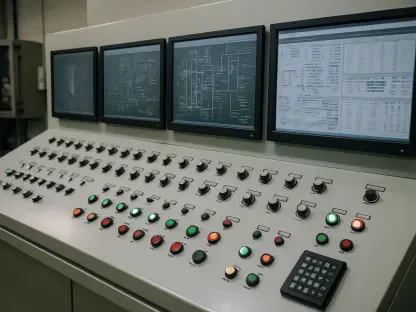The advent of 5G technology marks a significant evolution in cellular infrastructure, unlike previous generations, and presents an opportunity to enhance not just everyday communication but also specialized sectors such as aviation. NASA, through its Glenn Research Center, is steering comprehensive research into how 5G networks can support the burgeoning air taxi industry. This initiative aligns with the need for advanced and secure communication systems capable of handling the intricate demands of urban air mobility. By investigating the capabilities of existing 5G networks, NASA aims to offer foundational insights to aviation stakeholders and influence future regulations dictated by the Federal Aviation Administration (FAA).
The Role of 5G in Urban Air Mobility
Superior Data Management
5G networks have demonstrated a remarkable ability to manage vast data volumes with minimal signal transmission delays, offering a distinct advantage over conventional satellite systems. This capability is particularly pivotal in providing the real-time location data essential for air taxis, which navigate within congested urban airspaces. The robust performance of 5G ensures that communication remains uninterrupted even amid the complexity of skyscrapers and other obstructions typical of city landscapes. This advancement can significantly enhance the safety and efficiency of urban flights, ensuring that operators receive immediate updates on air traffic, weather conditions, and emergency alerts.
The utilization of ground-based antennas and networking infrastructure furthers the objective of achieving persistent connectivity. During testing, NASA installed a 5G-compliant radio system both on the ground and aboard a Pilatus PC-12 aircraft. By acquiring authorization from the FAA, this setup allowed for the in-flight examination of 5G signal transmission, focusing on sustaining signal integrity across various flight dynamics. As the aircraft maneuvered across different distances and angles from the ground station, careful evaluation ensured that communication channels remained consistent and reliable, addressing potential challenges faced by air taxis operating at lower altitudes.
Addressing Propeller Modulation
A notable aspect of the experiment involved examining the impact of propeller modulation, a form of signal degradation arising from the interference caused by the aircraft’s rotating propeller blades. Given that air taxis often operate at lower altitudes, this phenomenon is likely to be more pronounced, necessitating further exploration. NASA’s studies are directed at acquiring core performance data to be shared with both the FAA and the advanced air mobility sector, focusing on devising solutions for mitigating the effects of propeller modulations. This exploration is vital for ensuring that the infrastructure supporting air taxis can handle operational challenges specific to their design.
Continued investigations by NASA aim to refine data transmission speeds and fortify synchronization between airborne systems and ground networks. By prioritizing these areas, the goal is to enhance the seamless flow of information, which is essential not only for navigation but also for executing rapid response protocols in emergencies. The potential to transmit large sets of data packets efficiently means that air taxis can rely on updated traffic charts, sensor data, and even passenger communication systems in real time, promoting an environment of safety and reliability in urban air travel.
Aligning with Advanced Air Mobility Objectives
Building a Reliable Network
The pervasive consensus within the aviation community underscores the necessity of dependable wireless networks like 5G to ensure the future viability of air taxis as a safe and efficient mode of transportation. This need is underscored in urban settings, where the density and complexity of infrastructure present unique challenges. NASA’s initiative coincides with its broader Advanced Air Mobility mission, part of the Air Mobility Pathfinders project, which seeks to revolutionize and expand the capabilities of urban air travel. The agency’s ongoing research endeavors are crucial to establishing a solid foundation for subsequent studies and technological advancements.
Through the integration of findings obtained from 5G network trials, the initiative provides pivotal data for assessing air taxi communication systems. This research harnesses the full scope of 5G’s potential in supporting the evolving aerospace landscape, demonstrating how a traditionally telecommunications-centered technology is set to reshape urban air mobility. By laying down the framework for reliable communication networks, the aviation sector can better adapt to the demands of future operation models, ensuring that innovations are aligned with safety and efficiency goals.
Forward-Thinking Strategies
The insights acquired from NASA’s trials are intended to steer strategies for addressing existing and potential barriers within advanced air mobility. By leveraging state-of-the-art 5G technology, the initiatives aim to propose scalable solutions tailored to overcome challenges posed by urban environments. The collaboration with the FAA and other aviation stakeholders underscores a commitment to innovating regulatory frameworks and industry guidelines, ensuring that safety remains paramount as the sector looks to incorporate air taxis into mainstream transportation systems.
Undoubtedly, the rapidly advancing frameworks within telecommunications and aviation signal a pivotal shift in mobility solutions. As NASA continues to refine the integration of 5G networks within the air taxi domain, the emphasis will remain on facilitating safe urban environments and fostering innovation. By adopting a proactive stance on technological advancement, the path is set for the establishment of a transformative landscape in urban mobility, capitalizing on these key 5G advantages to address pressing future needs and challenges.
Paving the Path for Future Developments
The introduction of 5G technology signifies a major advancement in cellular infrastructure that goes beyond prior generations, offering a chance to improve not only daily communication but also specialized fields like aviation. NASA, via its Glenn Research Center, is spearheading detailed research into the role of 5G networks in supporting the growing air taxi industry. This effort corresponds with the need for sophisticated and secure communication systems that meet the complex requirements of urban air mobility. By studying the potential of current 5G networks, NASA aims to provide crucial insights to aviation stakeholders, which could shape upcoming regulations set by the Federal Aviation Administration (FAA). These investigations are vital for ensuring that emerging air transportation technologies operate safely and efficiently within urban environments, emphasizing the transformative effect 5G could have on public transportation and infrastructure development in aerospace and beyond.









